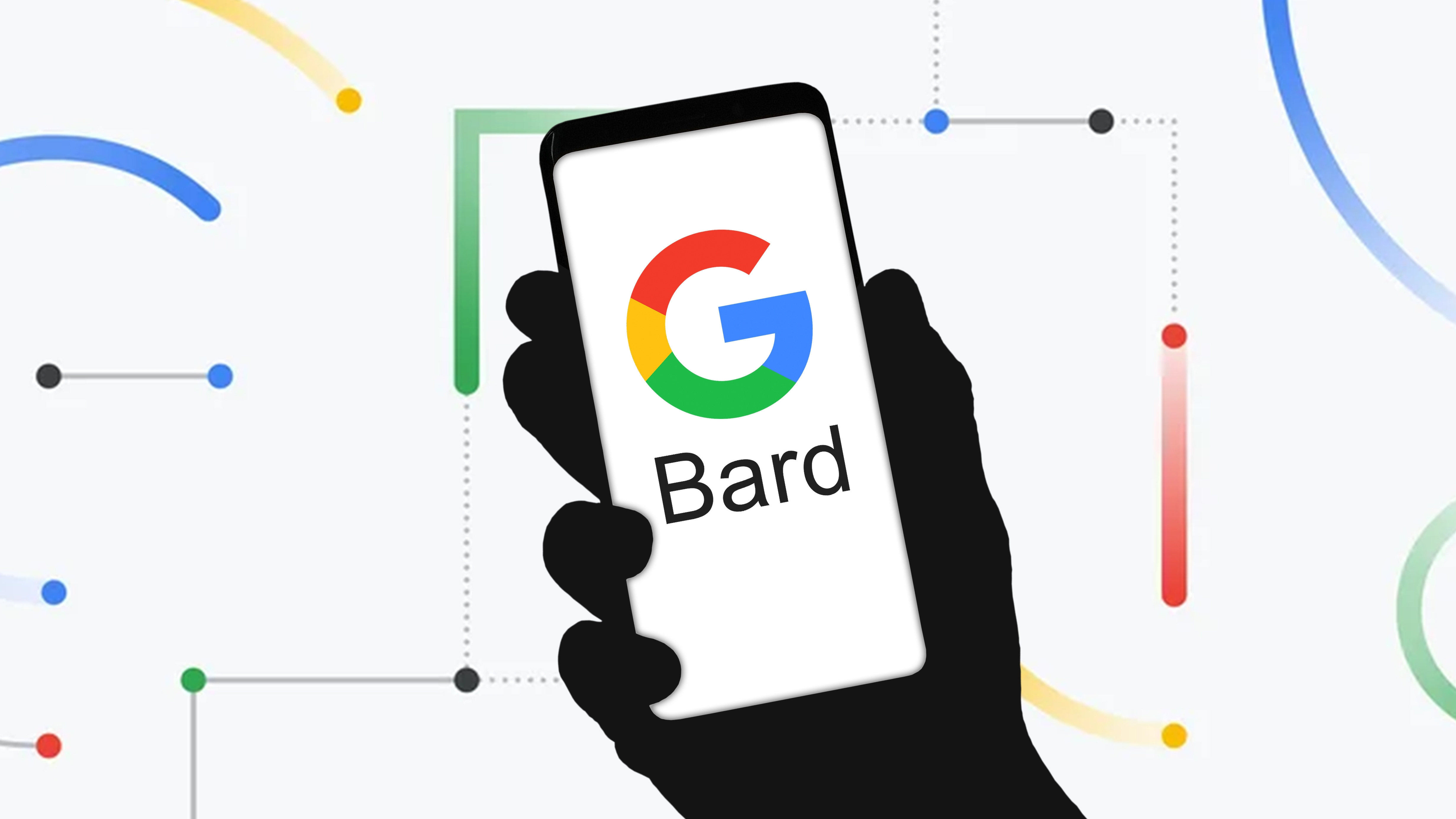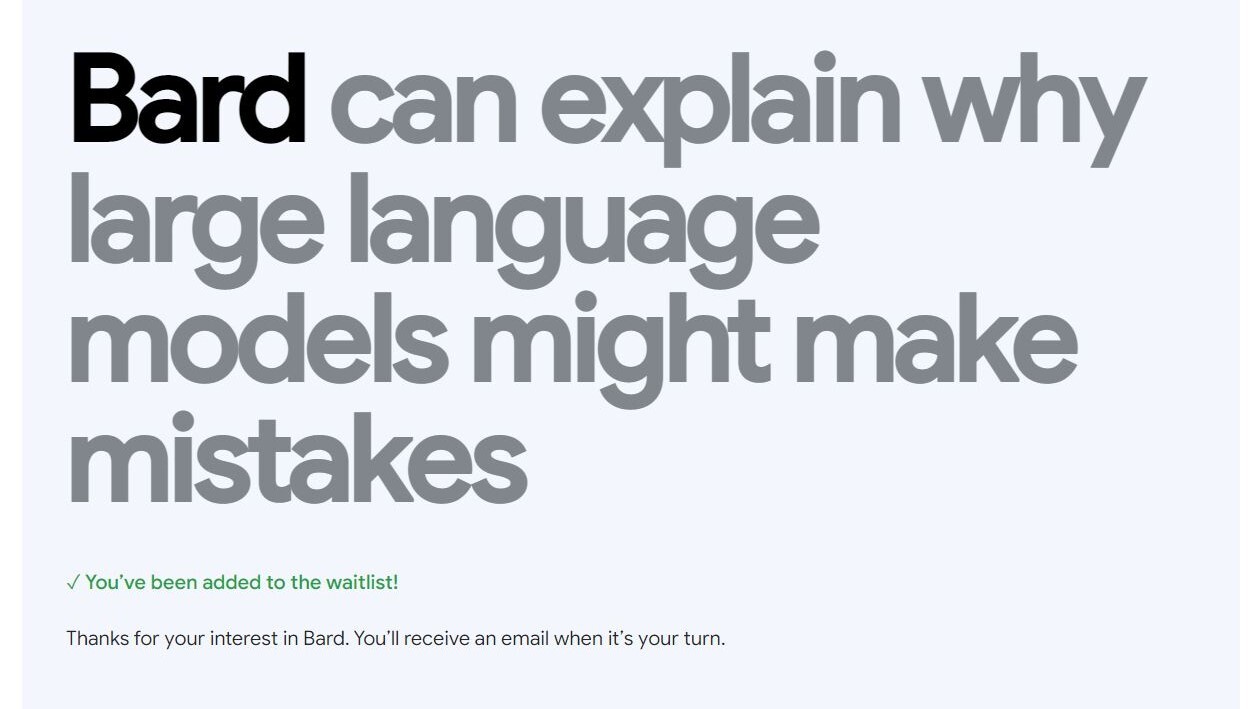
Editor's note: People have already started getting access to Bard through the waitlist, including members of our staff. This article was written prior to Google granting access to waitlist members.
Google Bard has been relatively quiet compared to ChatGPT and the new Bing with ChatGPT. But that appears to be changing — and fast.
Earlier this morning, reports indicated that select "Pixel Superfans" would be receiving access via an email invite to early access. However, Google must have changed its mind because now there is a waitlist where everyone can sign up for access.
Well, almost everyone. Workspace emails are not supported by the waitlist, so if you want to sign up for bard, you'll need to sign up with your personal Gmail rather than your work email. But otherwise, just head over to the Google Bard waitlist and sign up and you'll be added.
It's unclear if despite the opening up of early access that anyone has actually been able to access Bard in this new wave of invites. Even the Pixel Superfans have yet to report being able to use Google Bard, only that they will be notified when their access becomes available and to “hang tight” in the meantime.
If we get access to Bard or see it in action, we will update our reporting accordingly. But for now, it seems we still have to play a bit of a waiting game — though testing out Bard's features now feels like a reality rather than a dream.
What makes Bard different?

We've been monitoring ChatGPT versus Google Bard so there are some differences we already knew. The biggest is that while both use a large language model (LLM) to power their chatbot AIs, they don't use the same model. ChatGPT uses GPT-3 for its free research preview and GPT-4 for ChatGPT Plus and the ChatGPT API. Bard instead uses Google's Language Model for Dialogue Applications (LaMDA).
Practically, there are a few differences between the capabilities of these two models, some of which Google lays out on its Bard FAQ page. Bard is more in line with the capabilities of the new Bing when it launched — it is a research tool that can interact in a conversational manner. It can't code, and it can only handle U.S. English at the moment.
The other major difference is multimodal capabilities. Multimodal AI can take inputs and/or outputs in multiple formats: text, image, video and sound. Right now, Bard can only handle text, whereas GPT-4 allows ChatGPT to handle image inputs in addition to text. The new Bing with ChatGPT is rolling out the ability to create images while using its chatbot, though this is through integrating a separate AI tool called Bing Image Creator into the existing Bing chatbot.
Why is Google going so slow with Bard?
After a factual error in a previous demo cost Google over $100 billion, it’s understandable why it has taken so long for Bard to meet the wider world. Considering some of the stranger behaviors of ChatGPT and Bing, perhaps waiting is wise to avoid the likes of ChatGPT’s evil twin DAN from repeating themselves.
Considering Google’s market leader position, it has a responsibility to get things right rather than just try something different like the new Bing, which did admittedly reach 100 million daily users thanks to the ChatGPT integration. The reputational damage of Google Bard providing false information could hurt the image of its traditional search offering and cause much more in losses.
With all that being said, part of the reason Google is so far behind is that it seems to have been genuinely taken off guard by ChatGPT and the threat it poses to search engines. OpenAI only released ChatGPT in November 2022, but it was revealed that it had been working on its GPT technology for years. It was GPT3 that provided the big increase in performance that lead to public release. With GPT-4 arriving last week, Google needs to start catching up quickly.







